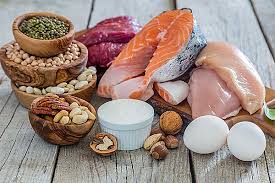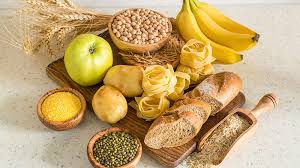When you hear the word fat, what’s the first thing that comes to mind? Do you picture greasy burgers and fries? Or maybe you think of something you’ve been told to avoid? Either way, fat has gotten a pretty bad rap over the years. But here’s the thing, not all fat is bad. In fact, some fats are essential for your body to work properly.
So let’s break it down; what fats are, which ones are helpful, which ones to cut back on, and how to get the right balance in your diet without stressing out.
First Things First: What Is Fat?
Believe it or not, your body needs fat. It is one of the main nutrients your body needs (along with carbs and protein). It gives you energy, helps your body absorb vitamins A, D, E, and K, builds healthy cells and nerve coverings, keeps you full after a meal, supports your hormones, immune system, mood, and even helps your body stay warm.
Most of the fat you eat is called triglycerides. These are made up of different types of fatty acids: saturated, monounsaturated, and polyunsaturated. All of them have different jobs and effects on your body.
Unsaturated Fats:
You can identify unsaturated fats because they are liquid at room temperature. These fats can improve blood cholesterol levels, ease inflammation, and stabilize heart rhythms. There are two types of unsaturated fats, monounsaturated and polyunsaturated.
Monounsaturated Fats
These fats help lower your “bad” cholesterol (LDL) and raise the “good” kind (HDL). They can also help with blood sugar levels, which is a win for your heart and your energy.
You’ll find monounsaturated fats in:
- Olive oil, canola oil, and sunflower oil
- Avocados
- Nuts like almonds and peanuts
Polyunsaturated Fats
These include omega-3 and omega-6 fats, both are essential, meaning your body can’t make
them on its own. You have to get them from food.
- Omega-3s (found in fish, flaxseeds, walnuts, and canola oil) help fight inflammation and lower your risk of heart disease.
- Omega-6s (found in vegetable oils, egg yolks, nuts and seeds) balance cholesterol levels and support blood sugar control.
Saturated Fats:
Saturated fats are solid at room temperature and mostly come from animal products. Think:
- Butter, cheese, cream
- Fatty meats and poultry skin
- Coconut and palm oils
While your body can handle some saturated fat, eating too much can raise your cholesterol levels and bump up your risk for heart disease. The general advice? Keep it under 10% of your daily calories.
Trans Fats:
Trans fats are man-made fats created by turning liquid oil into a solid to make foods last longer,
this is called hydrogenating oil.
Hydrogenated oil used to be everywhere (like in baked goods, margarine, and fried fast food),
but now they’re mostly banned in the U.S. because they raise LDL cholesterol, lower HDL
cholesterol, and increase inflammation in the body. Check food labels for hydrogenated oils or
partially hydrogenated oils. Limit or avoid these foods according to your health goals.
How Much Fat Do You Actually Need?
The general rule is:
- 30% of your daily calories should come from fat.
- Keep saturated fat under 10%
- Limit or avoid Trans Fats
Quick math tip:
To figure out how much fat you should eat in a day:
1. Take your daily calories and multiply by 0.30.
- Example: 1,800 calories × 0.30 = 540 calories from fat.
2. Divide that number by 9 (because each gram of fat has 9 calories).
- 540 ÷ 9 = 60 grams of fat per day.
3. If you eat 3 meals a day, divide 60 by 3.
- 60 ÷ 3 = about 20 grams of fat per meal.
Easy! Just remember: aim for around 30% of your calories to come from fat, spread throughout
the day.
Easy Ways to Eat Healthier Fats
Small changes go a long way:
- Snack on nuts and seeds instead of chips.
- Eat fish like salmon or sardines 2–3 times a week.
- Choose lean proteins like chicken, beans, or tofu.
- Swap full-fat dairy for low-fat or nonfat versions.
- Load up on fruits, veggies, and whole grains for balanced meals.
The Bottom Line
We do not need to fear fats, they can help protect your heart, keep your body running smoothly,
and even make your meals more satisfying.


